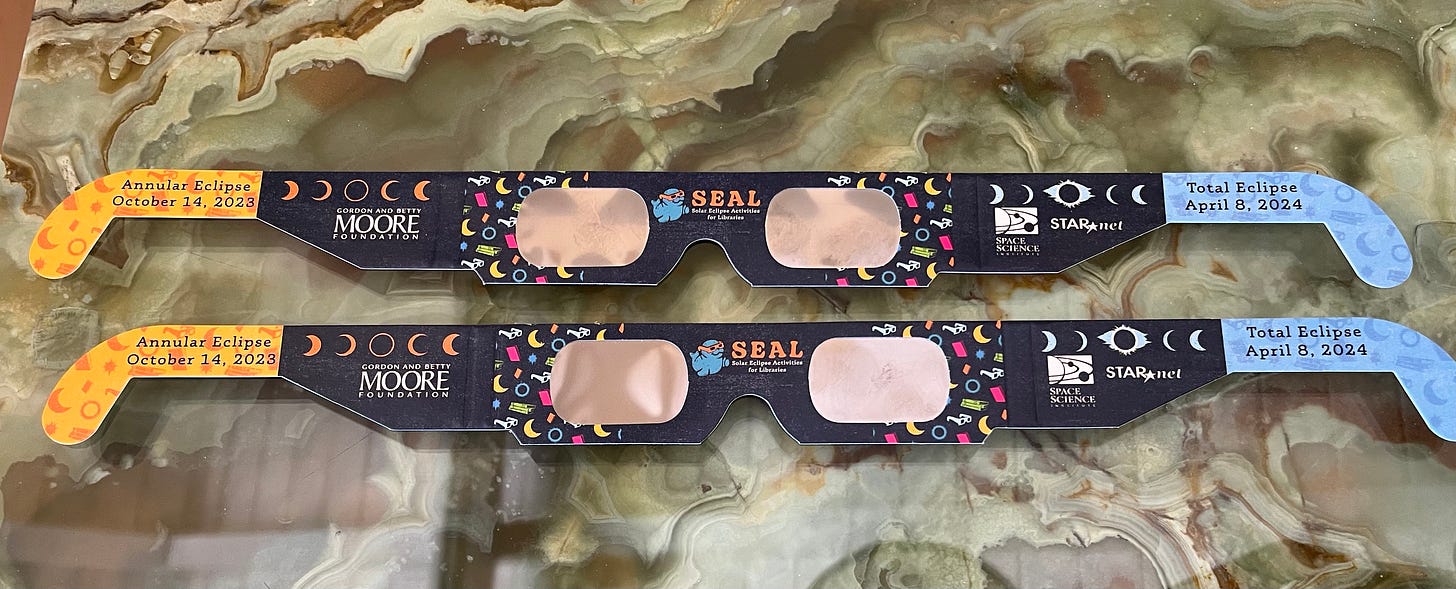
On April 8, while North America experiences its second total solar eclipse in seven years plunging Mazatlan to Maine into darkness midday, many will look up.
But according to Kim Breuer, associate professor of instruction in history at UT-Arlington, it’s also a good time to look back. “From the beginning of man, people stopped to look at solar eclipses,” she told WFAA/Dallas. “Pre-modern societies were sky watchers. Since the sky is cyclical in nature they noted when unusual things happened.
“But the Maya thought something was eating the sun. They believed the gods were angry at them.
“The Maya wouldn’t even look at an eclipse and not just because they didn’t have proper eyewear. They thought that to watch an eclipse your eyes would be pecked out by birds,” she said.
Substantiating Breuer, Heritage Belize community leader Felicity Kantun writes the Maya believed birds would poke out their eyes if they viewed the sun during an eclipse. To offset that disaster, they would look at the reflection of the sun in buckets of water when observing the phenomena.
A solar eclipse meant the death and rebirth of the sun
“Though solar eclipses have always been captivating throughout history, they were equally terrifying. To the Maya, a solar eclipse meant the death and rebirth of the sun.”
Historically, a total solar eclipse had different meanings for different societies, Breuer said. People mapped the sky, using their own tools to collect data and to predict when the next eclipse would take place.
As naked eye astronomers, the Maya understood eclipses and though good at predicting them, they still believed the sun’s disappearance was no coincidence.
The sun god is angry
“They were thinking, the sun god is angry with us,” said Breuer. “What have we done? How can we atone for whatever we’re doing because next time maybe the sun won’t come back.”
During a solar eclipse, the dark moon slowly covers more and more of the sun, creating the illusion that the sun is being eaten.
In Yucatec Mayan language, the eclipse is called Chi’bal K’iin which translates to “when the sun is eaten.” Parable has it that during a solar eclipse, the moon is angry and symbolically bites the sun. Therefore a solar eclipse is considered much more dangerous than a lunar eclipse. With the sun’s absence, there is a return to darkness. Diabolical spirits could emerge from the Earth’s interior and attack humans.
From Heritage Belize, Felicity Kantun writes the Maya considered solar eclipses to be the most feared celestial phenomena because they were related to negative events. These were based on the Maya cosmovision as the struggle of the sun and the moon, day and night, or good and bad. They were seen as a bad omen—but also as a sign of closure and renewal.
Wake the sun from its slumber
To prevent this catastrophe, the Maya engaged in ceremonies, sacrifice, and prayer to the gods. Because rebirth was at the center of all Maya ceremonies, bloodletting was common as they thought it balanced out death. Only the nobility were allowed to perform sacrifices of bloodletting; common blood could not appease the gods. Commoners performed rituals with dances and drums, thinking the noise would wake the sun from its slumber and drive away the conflict between the stars.
David Stuart’s discovery in Guatemala
Regarding the Maya and eclipses, David Stuart, youngest recipient of the coveted MacArthur Fellowship at 18 and now professor of the David and Linda Schele Mesoamerican Art and Writing, UT-Austin, said, “The Maya were real scientists. They did the calculations, they took evidence and they derived patterns from that evidence.”
During a dig into a chamber in Guatemala in 2014, Stuart noticed the wall had interesting hieroglyphs denoting numerous columns of numbers, bars, and dots. Some, he said, were well preserved enough to assume they were counting days. He took photos.
When he got back to Austin, he told UT News, he ran the photos through a Photoshop filter for better clarity. While crunching the numbers he realized there were intervals between columns totaling 177 days or six months, and realized he’d stumbled onto a lunar table. The table, he said, was used to keep track of potential lunar eclipses.
That accidental find led Stuart into the study of astronomy, and his discovery pushed back the date at which we know the Maya understood the lunar calendar by centuries. Records in this new-found calendar go back to 400 AD.
“The Maya are well known for being good astronomers; other cultures were too. But we just happen to have the records the Maya wrote down,” Stuart said. “They were accumulating data over generations and generations in order to calculate the eclipse intervals.
“They couldn’t necessarily predict when they would occur but rather when they could occur. That takes generations of observations to see patterns in the movement of the moon. The time scale was hundreds of years at least,” he said.
The eclipse season
“The unit of time they were aware of was the eclipse season. They had a lunar calendar that was pretty sophisticated and they kept track of that in addition to all these other calendars.”
Eclipse season, according to NASA, is described as the time when the moon, Earth and sun are lined up and on the same plane allowing for the moon to pass through Earth's shadow. Eclipse seasons last about 34 days and occur just short of every six months. Every year has two full seasons and two or three eclipses—lunar or solar—can happen each season.
Stuart also said that the Maya described an eclipse as “the eating of the sun.”
“There’s a bite being taken out of it that’s bigger and bigger,” he explained. “Whether they believed the sun was being eaten or whether it was merely a descriptive figure of speech we don’t know.
“They didn’t have a concept that the moon was an astronomical body relative to the earth. That knowledge didn’t come around until much later, in Europe. But they saw the patterns and from that evidence were able to see that the future conformed to that pattern during the eclipse.”
The Maya had an extensive mythology around the moon
Said Stuart, “The Maya were interested in and had extensive mythology around the moon, including the moon goddess, Ixchel, who was the consort of the sun. There’s an interesting kind of male/female duality to the sun and the moon that is very cross-cultural.”
Our understanding of solar eclipses may have changed but our obsession has not, said Evan Spencer, public services archivist at UT-Austin. “We’re still the same today, looking up at the stars trying to understand new things.”
“We’re human,” Breuer told WFAA/Dallas. “It puts us as part of this timeless human experience. An experience that is incredibly rare. Three hundred years will pass before a total solar eclipse appears in skies over North Texas again. It’s our time and we better hope that the gods, the fates, take the clouds away for us. If they don’t, forget history, ‘cause all we’ll have is a shady past.”
Griffith Observatory, Los Angeles, will host a live online broadcast by the Griffith Observatory team of the total solar eclipse from Texas. April 8, 10 a.m. to 1 p.m. PDT. Check YouTube for the Griffith Observatory channel.

Hi! I’ve added a Paid Button for those interested in supporting independent journalism and authors—me. If you enjoy reading my articles on Mexico and the Maya and chapters from Where the Sky is Born, consider supporting Mexico Soul for $50 annually, or $5 monthly. Joining allows access to all my content and future columns. There will still be free content, but if going paid sounds like your thing, I will very much appreciate it.
BACKSTORY—Puerto Morelos sits within 100 miles of four major pyramid sites: Chichen Itza, Coba, Tulum and Ek Balam. By living in close proximity to this Maya wonderland we pyramid hopped on our days off from Alma Libre Libros, the bookstore we founded in 1997. Owning a bookstore made it easy to order every possible book I could find on the Maya and their culture, the pyramids, the archeologists who dug at these sites and the scholars who wrote about them, not to mention meeting archeologists, tour guides, and local Maya who popped into the store. I became a self-taught Mayaphile and eventually website publishers, Mexican newspapers and magazines, even guidebooks asked me to write for them about the Maya and Mexico. I’ll never stop being enthralled by the culture and history and glad there’s always new news emerging for me to report on right here in Mexico Soul. Please share this post if you know others interested in the Maya.





PacMan has risen again
Terrific reporting. Many thanks. We’re headed to Cleveland tomorrow to see it. After totality in 2017, we are hooked!